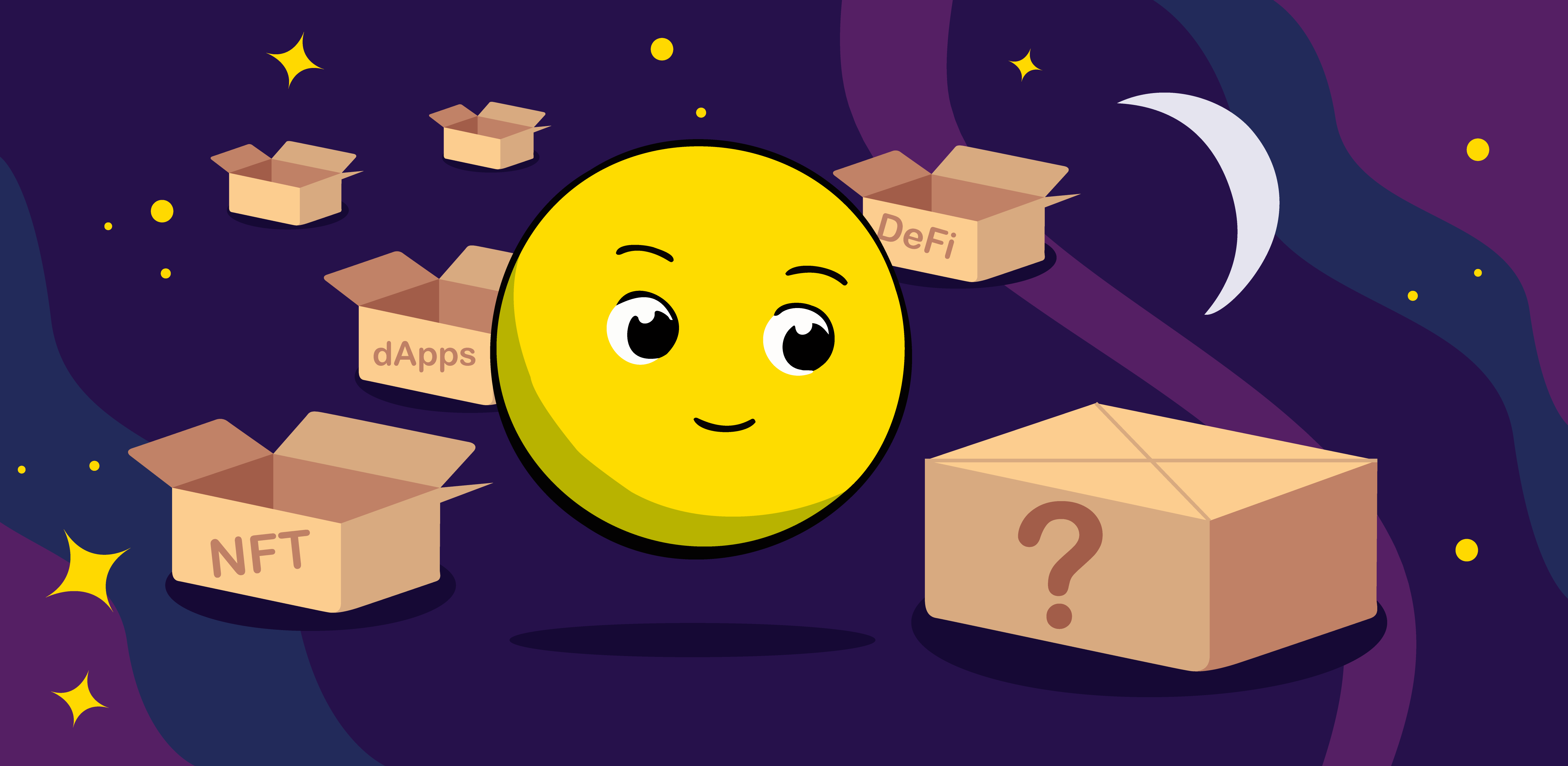
The Web3 industry is only emerging, but developers are actively working on its mass implementation. Web3 is the next stage in the development of the Internet, which will be controlled by ordinary users and creators.
Web3 vs Web2
Unlike Web 2.0, the third version of the Web is focused on improving scalability, security, and decentralization. Interaction between Web 3.0 and metaverse occurs using NFT. Web 3.0 is a group of decentralized applications that can "collaborate" with virtual worlds. Examples include Decentraland Mana and the Land token.
Web 3.0 is not hosted on the servers of private users or even Web3 companies, but in separate places. Storage cells are computers, laptops, and other user equipment. Each time information is entered, it is copied to all nodes. As a result, data manipulation is eliminated.
Benefits of Web 3.0:
- lack of central regulation;
- less censorship;
- the ability to express one's thoughts;
- monetization for presence on the Internet, etc.
To switch to Web 3, you need to understand cryptocurrency services, start crypto keys, deliver DApps applications, etc.
Web 3.0 is a new concept of the Internet, which is based on decentralization and the absence of a single supervisory authority. It is the next stage after versions 1.0 and 2.0, which opens up more opportunities from the data control position. Web 3.0 crypto meets the declared criteria and is the next step in the hierarchy of digital assets. In this text, we will talk about the current trends in this industry and consider some interesting projects.
Web 3.0 Trends
Creative DAO
The Internet and the simplicity of global communication have provided creative actors with development opportunities. Web3 technologies are also in their interest. In particular, the blockchain provides security, peer-to-peer (P2P) payments, and confirmed ownership.
DAO (Decentralized Autonomous Organization) is a type of organizational structure built based on a blockchain. Such an organization unites like-minded people who are working on the long-term success of a project or creator. Within the DAO, participants who own tokens usually have the right to vote.
In 2022, creative projects and creative personalities will be surrounded by more and more DAO, which will offer them support and feedback from community members.
Stabilizing the NFT Industry
Over the past two years, the NFT world has experienced ups and downs. Last year, non-fungible tokens faced an incredible level of growth and caused a great stir around themselves.
In 2021, the NFT marketplace OpenSea grew to an incredible level, and the tokens themselves began to appear in pop culture and social networks. However, this year sales have fallen, and some are wondering if the NFT bubble will burst.
The downtrend is largely worrying for those industry participants who are looking to make a quick profit. Loyal fans still see value in these tokens.
As speculation around technology begins to fade, the industry will enter a new stage in which NFTs will be applied in many areas of our lives. The mechanism of tokens (for example, in the format of patents, loyalty rewards, and in-game assets) will encourage users to own them, and not trade them.
Cooperation Between DeFi Protocols
Hacker attacks, destabilization, and other incidents in the Web3 sphere will continue to occur both in 2022 and, probably, in 2023. For example, in March there was a loud fall in UST and Luna tokens, due to which investors lost $60 billion.
Cryptosphere leaders will unite to find solutions to such incidents and ways to prevent them in the future. In 2022, even "competitors" are likely to cooperate within the framework of a single goal - to build a better future for the internet and a better version of Web3.
And as these incidents continue to occur, more DeFi protocols will unite in unstable situations.
TOP-5 Web3 Cryptocurrencies by Capitalization
Polkadot (DOT)
Open source multi-purpose protocol. Simplifies the transfer of data and different types of assets. Designed to connect public and private chains, accelerates the exchange of information and transactions.
Created by the Web3 Foundation. The founders are Gavin Wood, Robert Habermeier, and P. Chaban. The network is flexible and adaptive and has a convenient management system and high security. You can customize and adapt the monitoring process to your needs and conditions.
The total number of tokens is 1 billion, and initially, this number was 10 million. The network used NPoS mechanisms focused on the selection of validators/nominators for security. The purchase of a token is available on many exchanges, including OKEx, Huobi, and others.
The DOT token has a rate of $7.75 and is in 11th place by capitalization among all cryptocurrencies. At the time of writing, the coin is falling in price due to the characteristic bearish trend, which makes the offer attractive to investors. The project is developing and raising the course is a matter of time.
Chainlink (LINK)
A decentralized network designed to link smart contracts to real-world information. Created by S. Nazarov and S. Ellis. The ICO was held in the fall of 2017, during which it was possible to raise $32 million. At the same time, LINK is a cryptocurrency native to Chainlink, used to pay operators.
The goal of creating the platform is to link blockchain smart contracts with the rest of the universe. Chainlink oracles (LINK) connect to the Ethereum network, provide external information and start the execution of smart contracts. Network members are rewarded for providing access to API information or other external data.
Cryptocurrency rate of Web 3.0 LINK 6.81 $. On January 10, 2022, the price was $27.57, after which there was a gradual decrease. But this does not prevent the token from being in the lead and taking 22nd place in the general list by capitalization.
Filecoin (FIL)
A decentralized Web 3 system designed to store the most important information. The history of the project began in 2017, when already at the first ICO managed to raise $205 million. Initially, the launch was planned for 2019, but it had to be postponed to October 2020.
Filecoin (FIL) is created by experienced computer scientist H. Benet, known for the InterPlanetary File System. The essence of the project is decentralized data storage and the application of its security system. It simplifies access to information and complicates censorship. In the Filecoin (FIL) system, users themselves store data and receive a reward for this. The network is based on PoR and PoS. System nodes compete for the transmission of information to customers. Subsequently, a reward is issued from the FIL commission.
At the time of the review, the value of Filecoin (FIL) is $5.88, the coin is on the 38th capitalization place regarding all digital assets and in third place among cryptocurrencies on Web 3.0. It has great prospects for development.
Theta Network (THETA)
The blockchain-based network was created for video streaming. Launched in March 2019, it works in the form of a decentralized network. The creators are the co-founder of Twitch — J. Kan, and YouTube — S. Chen. Web 3.0 platform has its own digital asset Theta, performing management tasks.
The uniqueness of the project is the decentralization of streaming video. This is a streaming platform that rewards users and gives additional bandwidth. With the help of the program, it is possible to solve problems by showing videos in different parts of the planet and reducing costs. At the same time, quality is at a high level.
The Theta token is used to manage the platform. At the moment, its price is $1.16, and the total number of coins in circulation is 1 billion. With a capitalization of $1.15 billion, the token is in the 4th place among Web 3 projects and in the 42nd position among all cryptocurrencies. An additional advantage is the openness of the source code, which allows you to introduce modern innovations and make edits.
Helium (HNT)
Decentralized blockchain network for IoT devices, launched in the summer of 2019. It allows low-consumption wireless devices to share information and send data over the Internet. The role of nodes is performed by an access point providing a combination of a gateway and a mining device.
The goal of creating Helium is to improve the communication capabilities of the Internet of Things. And if in 2013, when the company was created, this direction was in its infancy, today the situation has changed. The system is interesting to device owners and users who work with IoT. At the same time, the basis is PoC and a new consensus algorithm.
HNT is a system token that is available without restrictions. But there is a monthly limit - no more than 5 million coins can be issued monthly. At the same time, the mining time is from 30 to 60 minutes necessary to unlock the award.
The essence of the project is simple: first, the owners of the nodes accumulate NHT to create networks of network infrastructure and then resell the asset. As of June 2022, there are 119.5 million such coins, the exchange rate is $9.07. Taking into account the capitalization of 1.076 billion tokens, HNT ranks fifth in Web 3.0 projects and 44th among all cryptocurrencies.
Lesser Known Web3 Projects
In addition to the projects discussed above, the following representatives of Web 3 deserve attention:
Siacoin (SC) is a unique coin on Web 3. Provides information storage in the Dapp cloud. Sia cloud storage costs less than competitors. The token price is 0.004 dollars, the capitalization is 215 million dollars, and the number of coins is 51 billion.
Flux (Flux) is a decentralized platform on Web 3.0, offering unique products at the Amazon Web Service level. The use of Flux allows one to operate, place and maintain servers and also to start Web3 applications.
Ocean Protocol. A convenient tool for creating Web 3.0 applications. It is aimed at decentralizing the exchange of information and gaining access to the network. It helps you buy/sell data, and manage the community financing process. The value of the token is $0.22, and the capitalization is 44 million.
Audius (AUDIO). An interesting project that will appeal to music lovers. This is a streaming platform whose goal is to reduce contact with the record company. For staking cryptocurrency, tokens and fan votes are issued. The presence of coins provides access to control, additional functions, increased security, etc.
Radicle (RAD). Decentralized project on Web 3.0, designed to sponsor different projects and participate in management. The token exchange rate is $1.81, and the capitalization - is $55.6 million.
In addition to the above, other tokens can be named, including Casper (CSPR), NuCypher (NU), Chromia (CHR), and others. Web 3.0 tokens can be bought through large exchanges. To do this, you need to register, replenish your (for example) USDT account, choose a suitable pair and go to the cryptocurrency purchase section.



